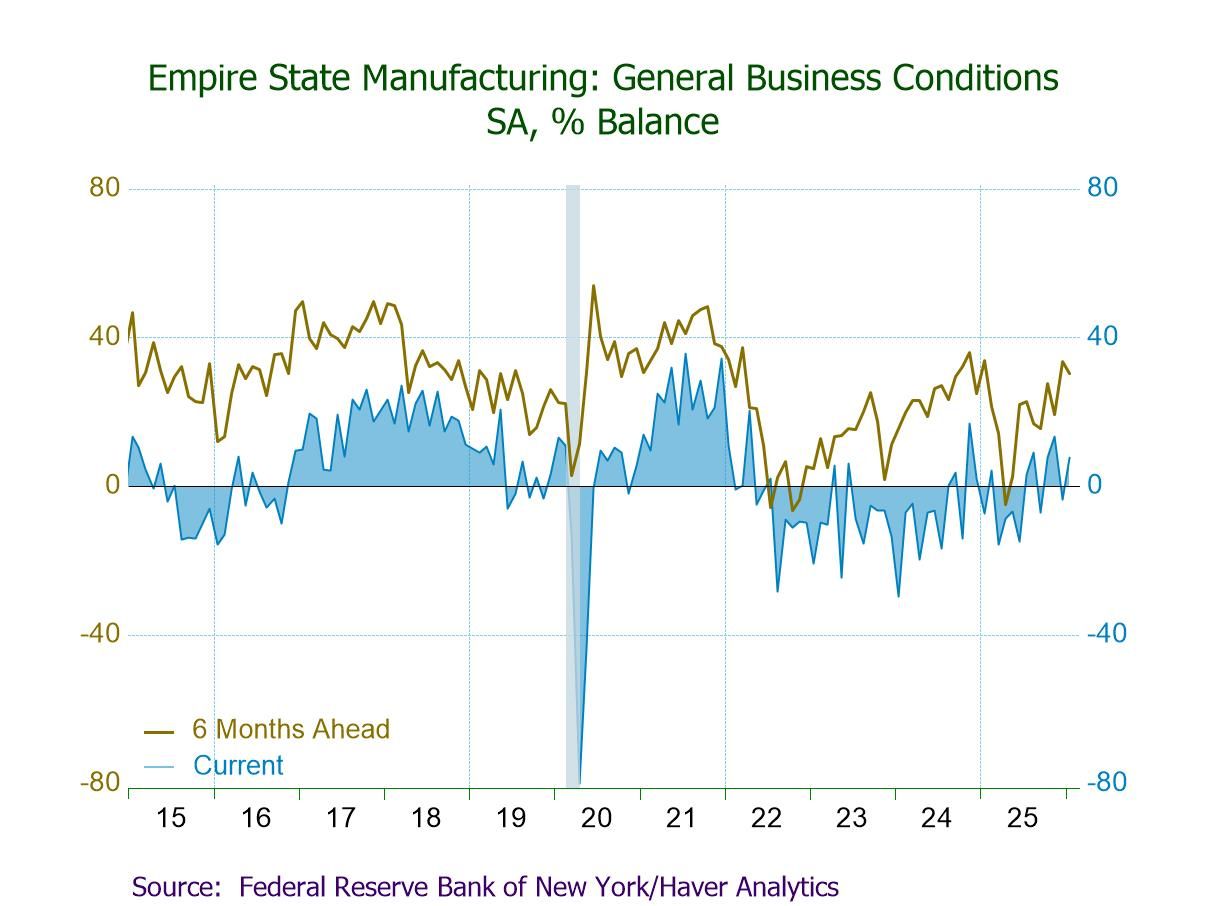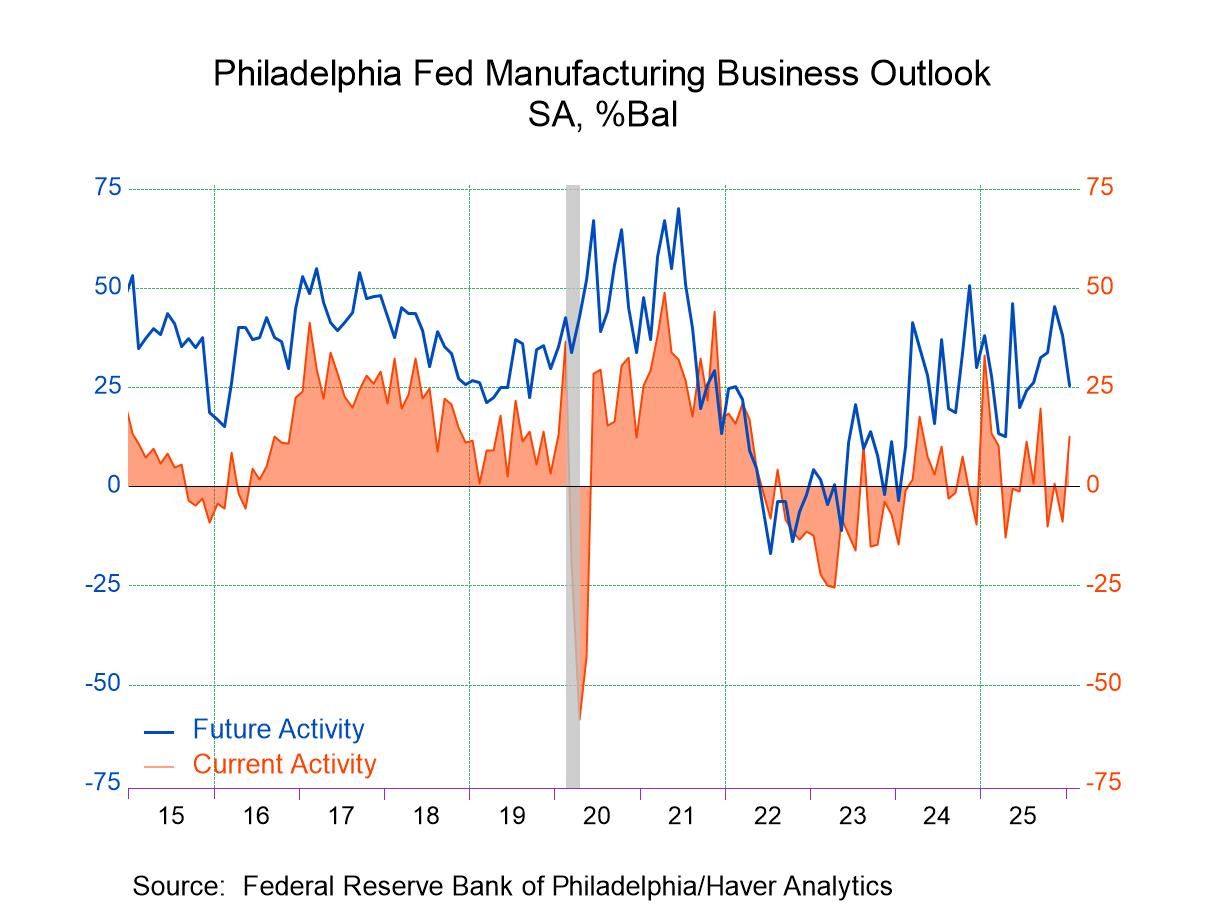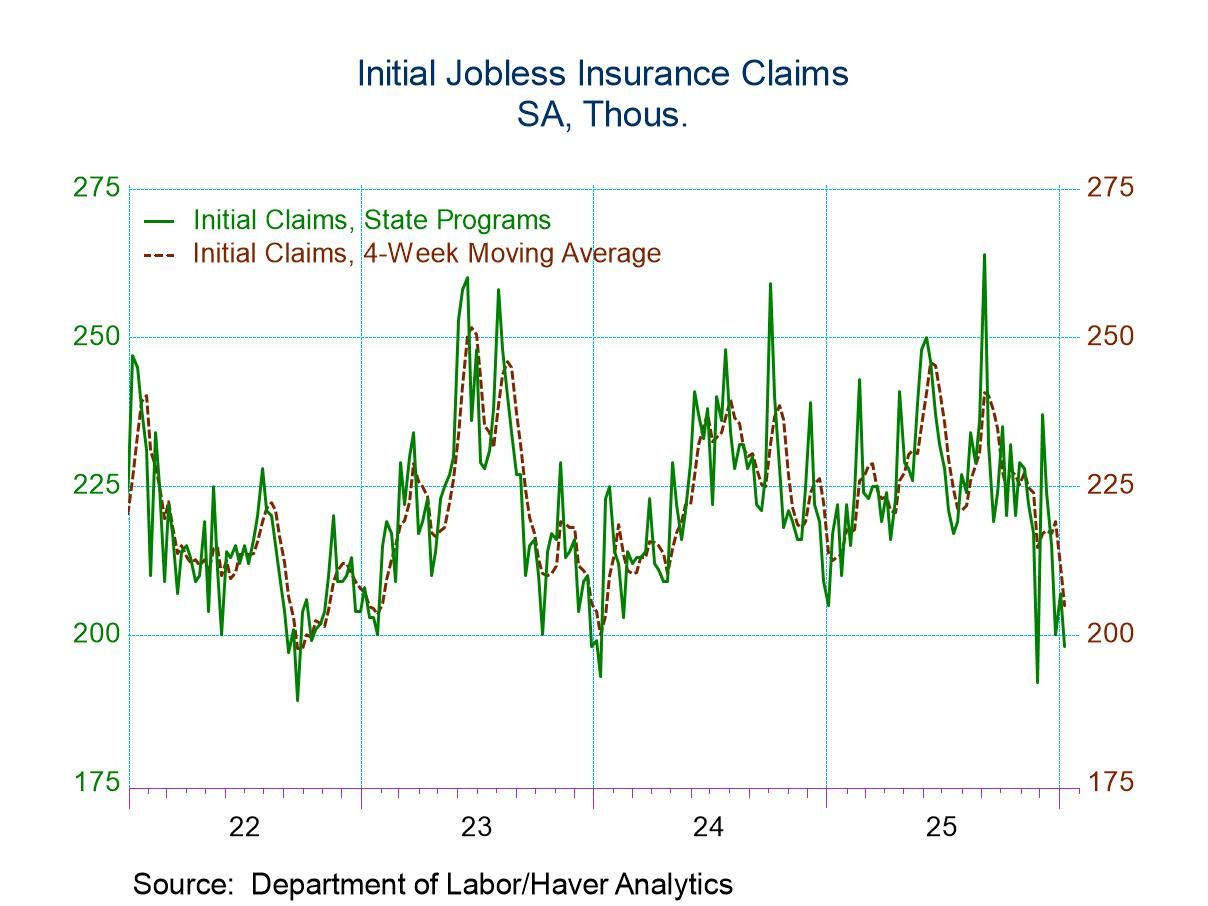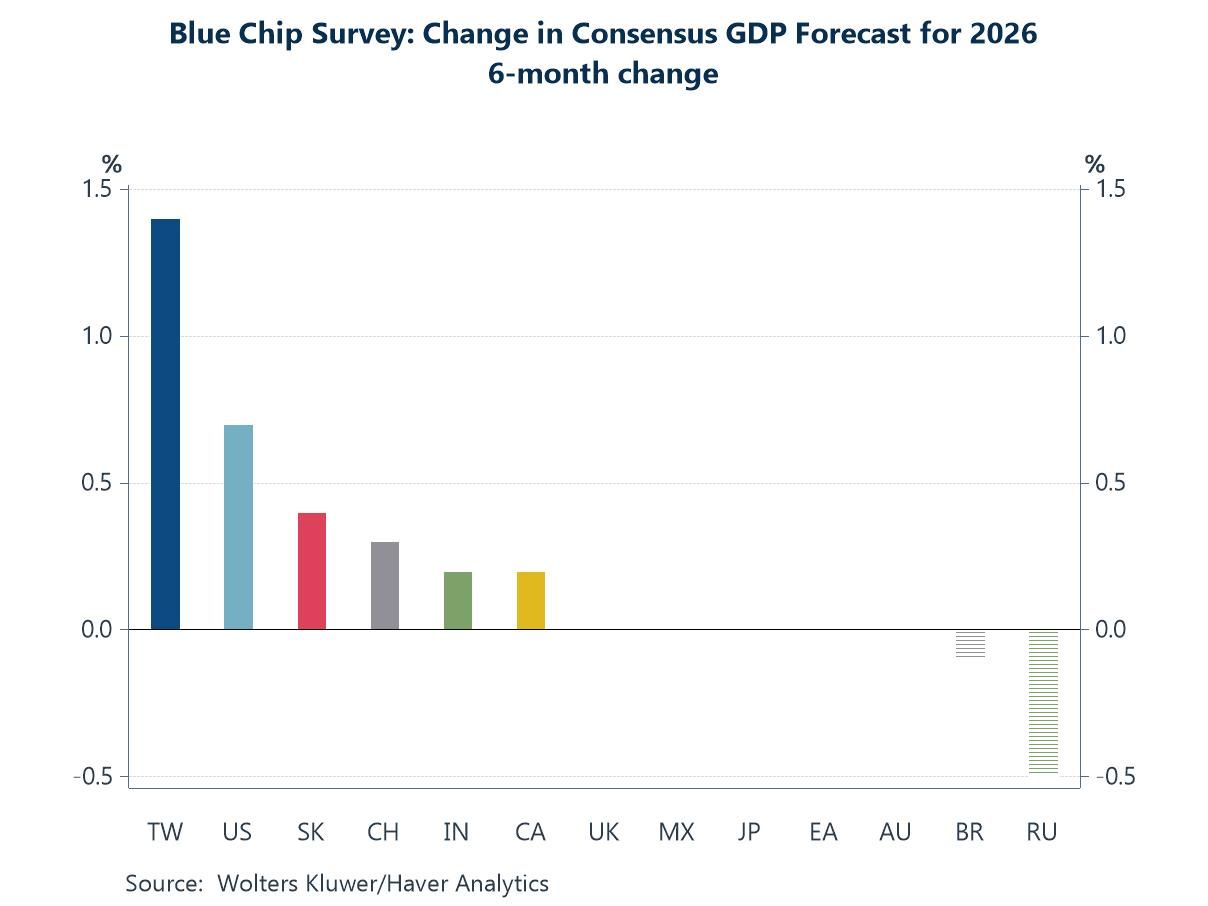 Global| Sep 25 2013
Global| Sep 25 2013Italians Feel Better-Should They?
Summary
It's hard to pass judgment on what consumers or businesses feel. It's a bit like trying to assess if, when someone says that their favorite color is red, that's correct. We can only assume that consumers do feel the way that they say [...]
It's hard to pass judgment on what consumers or businesses feel. It's a bit like trying to assess if, when someone says that their favorite color is red, that's correct. We can only assume that consumers do feel the way that they say they feel. The Italian consumer psyche is improving very sharply, much more sharply than the psyche of Italian businesses. They both can't be right.
Italian consumer confidence has recovered much more sharply than has Italian business confidence over the past year. But business confidence had hit a lower earlier recession low than had consumer confidence. While still not back to normal, consumer confidence now sits at about the 45th percentile of its high low range and has just edged up above the lower one third of its historic queue. However, what's most remarkable about consumer confidence in Italy is how incredibly rapidly consumer confidence has shot up in the past few months and, despite that, how sharp its rise continues to be. These improvements come without any substantial shift in measurable economic circumstances for Italy.
Sure, the Italian economy appears to be improving and there is much more widespread optimism about the European Monetary Union in general. Italian kingpin and former Prime Minister Silvio Berlusconi appears to be on his way out of the Italian political picture. But Italy is still part of the European Monetary Union. Its competitiveness is still struggling to gain some ground versus Germany and fellow EMU members. All has not been made well.
I suppose one explanation for the improvement in the consumer outlook is simply that the economy had been so flat on its back and that there were some that had concerns that a euro-exit could even be in Italy's future. Compared to that, conditions have improved, but how markedly?
Indeed, if we look at the ranking of the current situation over the last 12 months compared to the ranking of the situation expected over the next 12 months we find an historically large gap between the two assessments. The gap between the historic ranking of these two measures is the 16th largest in the history of the survey making this gap among the 4% largest gaps in the history the survey. The last extremely large gap that saw the future reading put at such a tremendous premium compared to the past, occurred shortly after Italy had joined the Monetary Union. What change now compares to that?
The premium of the future 12-month over the past 12 month situation is eroding to some extent. Currently, we are looking at the September figure; June had produced the largest gap between these two survey elements in their entire history, that historically large gap is eroding slowly.
The thing we have to consider is whether Italian consumer's had been overly pessimistic or whether they are becoming overly optimistic. To help with this assessment we can compare their assessment to that of businesses which is in terms of its own queue standing weaker than either the past or the future current situation assessments by consumers.
Moreover, despite the fact that consumers evaluate the overall situation for the next 12 months extremely high, in the top 14% of their historic assessments, there is a paradox. Expected unemployment is assessed as being in the top 30% of their expectations; planned purchases in the next 12-months are in the lower 2.5 percentile of their historic assessments. While the overall situation for the next 12 months is assessed as being much better, the prospects for spending and unemployment don't seem to be very good. In fact, we also have a current assessment for major purchases: in the current situation that has a standing at about the 70th percentile of its historic queue This standing makes it roughly a top 30% evaluation. It is a standing far superior, of course, to the lower 2.5% rating of purchases planned for the next 12-month- even though the overall situation in the next 12-months is assessed to be so stellar. PARADOX!
On balance I think that when we look at the Italian survey, we are dealing with Italian consumers who have some considerable conflicts in their thinking. We know, for example, that Italian automakers are keeping workers on extended furloughs. When we look at the Italian trade situation we see the improvement has been substantially because of weak imports which we can link back to weak domestic demand rather than to improved competitiveness. Italian exports are expanding but not as sharply as imports are being curtailed.
On the whole it seems to me that something has improved in Italy and it is rather widespread, judging from the improvement in the survey. But Italy remains quite unsure of exactly how much improvement its future will hold. Italy has been put through the ringer over the past year or so. Suggestions that some of these pressures are going to be alleviated because a different interpretation of austerity will be adopted by the European Commission have gotten consumer's hopes up. In the business community attitudes remain far more circumspect. Business confidence over the last 12 months averages 89.3 and its index and has risen to 92.9. There is some improvement on the part of business. Consumer confidence, on the other hand, averages 90 over the last 12 months and has improved to a figure of 101.1- a much larger improvement, from a very similar base.
The question remains: which of these two groups has a better finger on the pulse of reality? At the moment we can have opinions on this but the future will tell. It seems to me that the improvement in consumer confidence is too sharp to understand or to take at face value. Also, it lacks back-up in its own survey as well as in reality. However, the level of consumer confidence is still low. The business confidence reading is even lower. At the end of the day I think that the thing we need to caution against is the notion that there is some strong ongoing rise in consumer confidence that's going to continue. While I'm surprised that it has continued to rise as strongly as it has I would bet against that rise continuing much into the future.
The chart shows us that business confidence and consumer confidence have gone in opposite directions in the past. Until about 2008 such divergences had been relatively minor. But, since then, the differences have become rather large. In 2008-2009 there was a substantial gap that developed between business and consumer confidence as business confidence plunged for a while as consumer confidence continued to improve. Then in early 2012 business confidence edged slightly lower and stabilized during a period when consumer confidence plunged to remain at extremely low levels. Now, what we are seeing is an equally sharp and more sustained rise in consumer attitudes while business confidence is making only a modest improvement. I think it's always somewhat hard to assess reality when two important groups, like businesses and consumers, assess the situation so very differently. But since, in the grand scheme of things, both consumer and business indices remain weak, perhaps that's the commonality that makes the two surveys still compatible in the big picture. If so, the rise in consumer confidence should be mostly set-aside in favor of the implication of its still historically-low level. We will see in the coming months if confidence does stabilize around its current level and begin to track in tandem with business confidence. If so we could probably assume that Italian consumers and businesses were once again on the same page.

Robert Brusca
AuthorMore in Author Profile »Robert A. Brusca is Chief Economist of Fact and Opinion Economics, a consulting firm he founded in Manhattan. He has been an economist on Wall Street for over 25 years. He has visited central banking and large institutional clients in over 30 countries in his career as an economist. Mr. Brusca was a Divisional Research Chief at the Federal Reserve Bank of NY (Chief of the International Financial markets Division), a Fed Watcher at Irving Trust and Chief Economist at Nikko Securities International. He is widely quoted and appears in various media. Mr. Brusca holds an MA and Ph.D. in economics from Michigan State University and a BA in Economics from the University of Michigan. His research pursues his strong interests in non aligned policy economics as well as international economics. FAO Economics’ research targets investors to assist them in making better investment decisions in stocks, bonds and in a variety of international assets. The company does not manage money and has no conflicts in giving economic advice.







